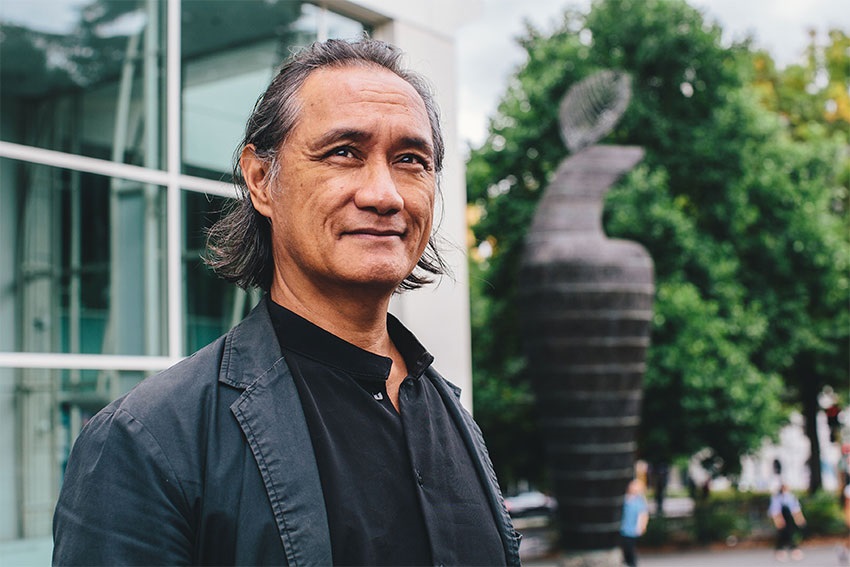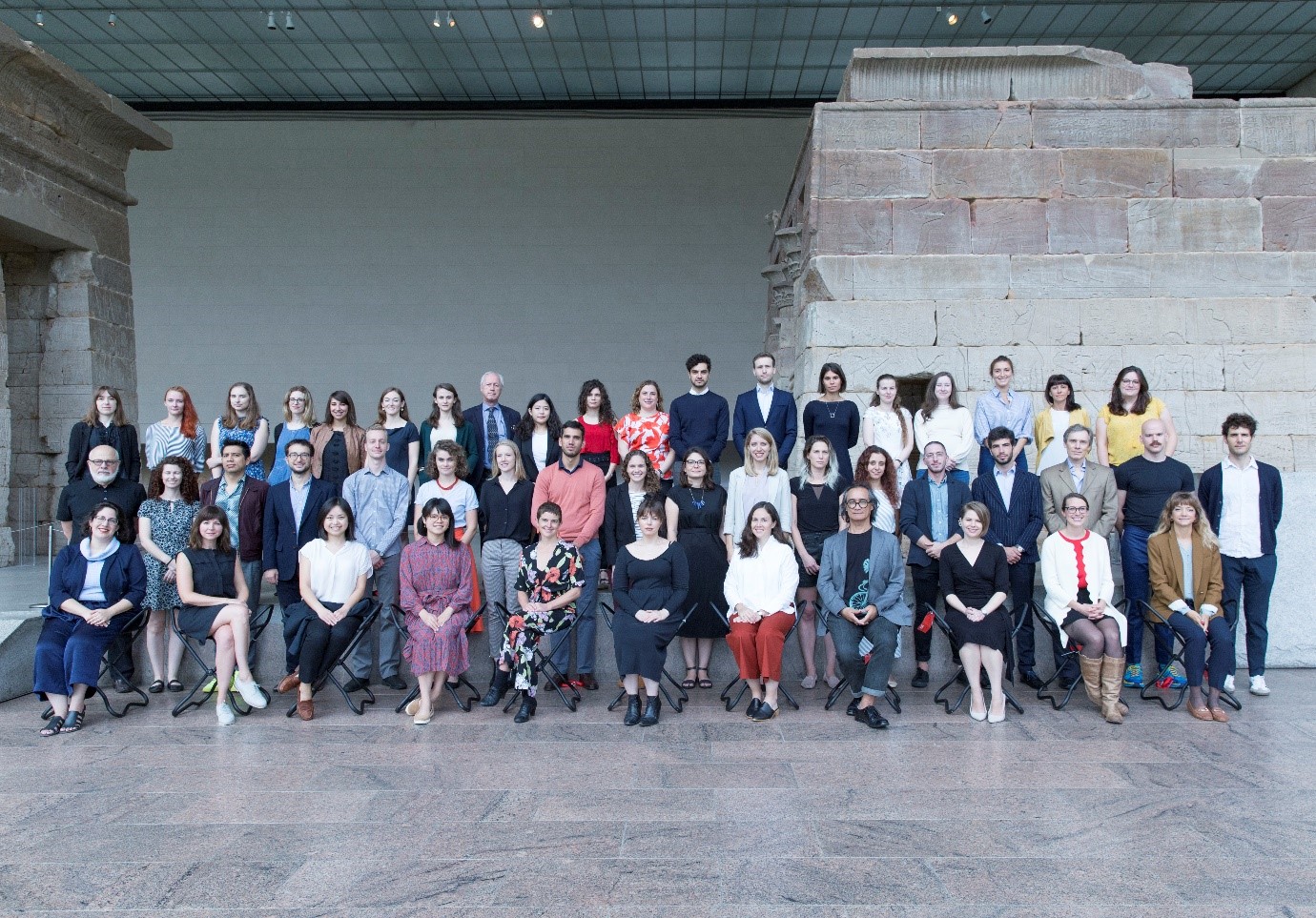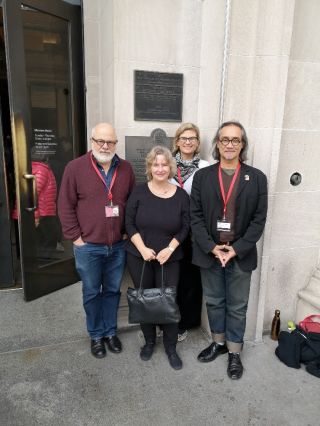Albert Refiti at The MET

Last year, Art and Design Associate Professor Albert Refiti received the Andrew W. Mellon Senior Fellowship at The Metropolitan Museum of Art in New York. He shares his experience of 6 months living and researching in New York.

The MET 2019-2020 Fellows in front of the Temple of Dendur in the Egyptian Hall of The MET
How was New York?
It was my first time in New York. The MET is quite an amazing place, I didn’t realise how prestigious it was until I got there.
What did you do in New York?
During my time in New York, I was hosted by the Department of Art of Africa, Oceania & The Americas. The department started out as Nelson D Rockefeller’s private museum, The Museum of Primitive Art, located right opposite MOMA. The department has large collection of works from Melanesia. I was there to research how The MET works with their Pacific collection and how they design exhibits and what stories they want to tell. I am writing a paper which is a comparative analysis of the architectural and exhibition strategies of The MET, Auckland Museum and Melbourne Museum.
The Department will close and undergo a major renovation for 4 years at the end of 2020. I got to sit in renovation meetings and contribute to discussions of how it will look like in 4 years.
Tell me about the Te Maori 1984 exhibition
The other main aspect of my fellowship was to look through the Te Maori 1984 exhibition archives. The exhibition was a key moment for New Zealand and Maori art. The exhibition included a pōwhiri at its opening on Sept 10 1984. 5th Ave from 81st to 84th Street had to be shut off in the morning. It was the first time a major museum recognised an indigenous ceremony in this way. It turns out that a group of young Maori intellectuals who were educated in the USA and were familiar with The MET in New York were crucial to the exhibition being stad geat all. I will be producing a research paper on the genesis of the Te Maori exhibition and the relationships formed around this exhibition that enabled it to happen.

With curators Dr Philippe Peltier from the Quai Branly Museum in Paris, Dr Hilke Thode-Arora from the Museum Fünf Kontinente in Munich and Dr Maia Nuku Oceania curator at The MET.
What did you get out of this experience?
I have developed a wider appreciation of art, beyond the categories of contemporary or regional. During this fellowship, I was very lucky to have the opportunity to visit some private collections that demonstrate incredible thought and consideration about what goes into the collection. That has also helped me develop an appreciation and a more informed view of art collectors and the work of antique art dealers.

In front of Kent Monkman’s painting mistikôsiwak (Wooden Boat People) at the Great Hall of The MET.
How has this experience changed or influenced your research?
I’ve learned that museums internationally are changing very rapidly in the way that they are dealing with Indigenous communities and their tāonga. While I was at The MET the Native American Cree artist Kent Monkman was commissioned to create two large paintings in the Grand Hall that are satirical re-imaginings of the encounter between Western imperialism and Indigenous people and lands in North America. That would never have happened 10 or even 5 years ago. That got me thinking about how contemporary Pacific artists have been doing that for awhile, but our museums here in Aotearoa are a bit slow in broaching decolonial issues and how to make that part of the history of their own collections, a history that must be revisited and reinterpreted with contemporary eyes.